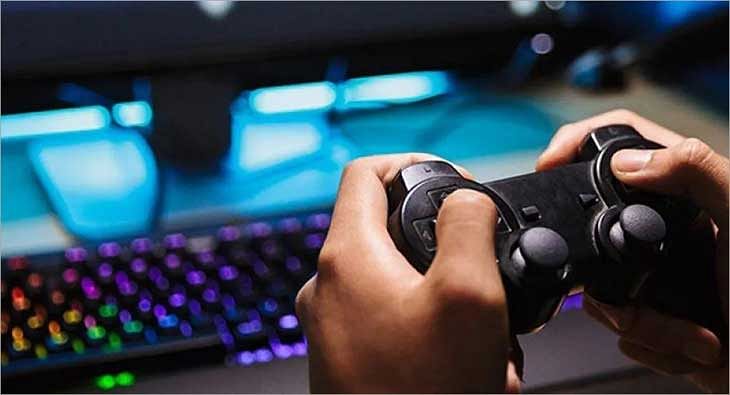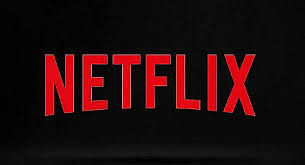How ‘real money gaming’ can be a game-changer for advertisers & agencies
Experts opine that the heightened interest in gaming will see a synergy between different brands that can use the universality of gaming as a platform to promote their companies

The gaming industry in India has grown exponentially over the past few years with over 450 million active gamers and streamers till date and more being added to the mix. As the gaming graph shows an upward trend, industry stakeholders are already looking at its next level- Real Money Gaming (RMG), which refers to actual money spent on and earned in online casino games, daily fantasy sports, regulated sports betting, and lotteries.
From gaming companies and advertisers to A&M agencies to industry analysts, all are betting big on this gaming niche as the sector expands. Shivanandan Pare, Executive Director & CEO, Gaussian Networks (Adda52.com and Addagames.in), says there is an increasing interest in skill-based games like ‘Poker’, which has a reasonable possibility of making some profit. Indeed, it’s part of a bigger ecosystem. He notes, “Globally, gaming is already bigger than Hollywood and the music industry combined. If 2010-2020 was the decade of streaming services, according to me, 2020-2030, will see entertainment and pop culture driven by gaming.”
Pare believes that this heightened interest of different groups in gaming, both businesses and customers, will see a synergy between different brands that can use the universality of gaming as a platform to promote their own companies. Moreover, those playing RMG are likely to have higher disposable incomes, could provide a lucrative return on advertising to that base.
Agencies are also focusing heavily on gaming, as the global gaming industry’s worth stood at US$300 billion in 2022. Of this, India makes up a sliver at roughly one percent market share. The number in itself is nothing to sneeze at though, given that Indian gaming companies spent Rs 1400 crore on ad spends in 2021 alone.
“It makes sense for gaming companies to convert casual gamers, which make up the vast majority of the gamers, into customers who play RMG. The Indian gaming industry isn’t well monetized yet, with only 13-15% gamers who actually pay and play. That’s some 96-100 million people in the country, and while it’s a big number it can be a lot bigger” says Ramsai Panchapakesan, Senior Vice President and National Head - Integrated Media Buying, Zenith.
“Gaming is definitely going to be a huge focus for us,” says Nitin Gupta, CEO, Xapads Media, adding that companies looking to associate with gaming companies are no longer confined to those targeting younger audiences but wanting to appeal across demographics, given the deep penetration of gaming.
These synergies are happening mostly online. With the recent return to normalcy, industry insiders expect on-ground events to also attract brand association. “I believe people inherently want to go out and meet in person. Of course, digital has become part of every activity now, and people will still play online, but we’re going to see a lot more people stepping out to play and engage with the community,” says Pare, whose company recently concluded a year-long poker championship - Adda52 Champions Leaderboard (ACL) 2021, and saw players from all walks of life and across the country compete for a spot in the leader boards, crowned with the championship round held physically in Goa.
Read more news about Digital Media, Internet Advertising, Marketing News, Television Media, Radio Media
For more updates, be socially connected with us onInstagram, LinkedIn, Twitter, Facebook, Youtube, Whatsapp & Google News
Google I/O: AI the centrepiece of Sundar Pichai-led conference
The Google head announced new AI-powered models and capabilities embedded across Google products like Search, Photos and YouTube
121. That’s the number of times Alphabet CEO Sundar Pichai used the term AI during his keynote speech at the annual Google I/O Event. The longtime Google head shared the number, stating that someone was sure to count so he just made it easier for them.
Indeed, AI was the centrepiece of much of the conference with Pichai and other product and project leads announcing new models and capabilities, all powered by Artificial Intelligence, being embedded across Google products from Search to Photos to YouTube.
“Today, all of our 2-billion user products use Gemini. And we’ve introduced new experiences too, including on mobile, where people can interact with Gemini directly through the app, now available on Android and iOS. And through Gemini Advanced which provides access to our most capable models. Over 1 million people have signed up to try it in just three months, and it continues to show strong momentum,” said Pichai.
Despite its rival OpenAI attempting to upstage the event by announcing the launch of its most advanced model ChatGPT-4o just a day before the I/O event Google executives seemed confident in their own company’s capabilities in the area, given the longer duration of their operations.
Another key takeaway was Pichai’s focus on AI agents, literal personal assistants at your fingertips to take care of all of one’s digital needs. “I think about them as intelligent systems that show reasoning, planning, and memory. They are able to “think” multiple steps ahead, and work across software and systems, all to get something done on your behalf, and most importantly, under your supervision.”
“We are still in the early days, but let me show you the kinds of use cases we’re working hard to solve. Let’s start with shopping. It’s pretty fun to shop for shoes, and a lot less fun to return them when they don’t fit. Imagine if Gemini could do all the steps for you: Searching your inbox for the receipt; Locating the order number from your email; Filling out a return form; even scheduling a UPS pickup. That’s much easier, right?” asserted Pichai.
Another standout development was the introduction of Ask Photos to be embedded into Google Photos. Noting that the product was launched almost nine years ago, Pichai said, “Since then, people have used it to organize their most important memories. Today that amounts to more than 6 billion photos and videos uploaded every single day. And people love using Photos to search across their life. With Gemini we’re making that a whole lot easier.”
“Say you’re paying at the parking station, but you can't recall your license plate number. Before, you could search Photos for keywords and then scroll through years’ worth of photos, looking for license plates. Now, you can simply ask Photos. It knows the cars that appear often, it triangulates which one is yours, and tells you the license plate number.”
Speaking further about Gemini, Pichai said one of the most exciting transformations with Gemini has been in Google Search. “In the past year, we’ve answered billions of queries as part of our Search Generative Experience. People are using it to Search in entirely new ways, and asking new types of questions, longer and more complex queries, even searching with photos, and getting back the best the web has to offer.”
“We’ve been testing this experience outside of Labs. And we’re encouraged to see not only an increase in Search usage, but also an increase in user satisfaction. I’m excited to announce that we’ll begin launching this fully-revamped experience, AI Overviews, to everyone in the U.S. this week. And we’ll bring it to more countries soon,” said Pichai.
At the event, Google also announced Project Astra, the company's vision for the future of AI assistants. It answers questions in real time through text, audio or video prompts. Astra's capabilities will now be embedded into the Gemini app.
AVOD is the bedrock of our service: Ishan John Chatterjee, YouTube
Ishan John Chatterjee, Director, YouTube discussed the significance of India as a market for the streaming giant and the prospects of launching YouTube TV in the country among other things
In what ended up being a serendipitous circumstance, exchange4media got to sit down with Ishan John Chatterjee, Director, YouTube, at the recent CTV Conference for an interview that will subsequently air on the video platform.
Given that globally people watch one billion hours of YouTube every single day, and 250 million Indians are expected to come online for the first time within the next year or so, our first question naturally was around if there is a specific strategy for them.
“If I take you back in time to when YouTube launched in India, that was 15 years ago in 2008, the Internet was not as ubiquitous as it is today. And if you look at YouTube's journey over this period through the mid 2010s when data prices started dropping, smartphones started to become more affordable, we saw Indians from all over the country across Tier Two, Tier Three towns across multiple languages join. Many of them were first-time Internet users coming to the platform,” noted Chatterjee.
And then in the last few years, even through the pandemic, the service saw even more users come in, in different use cases around Shorts on the one hand, Connected TV on the other hand. And so they've had over their journey in India so far, a lot of people, first-time Internet users coming onto the Internet and onto YouTube.
“And it's a long way of saying that we think that the proposition that we have for the first-time Internet user is very strong. If you take a step back, the proposition is we want to be the best place for video. So whether you are after a 15-second clip or a 15-minute VOD or a 15-hour live stream, it's available. You want content across different genres, across multiple languages, it's available. And I think that breadth of content, along with the experience that you see across device types, I think will help us serve the next 250 million that come on,” he said.
And given that India is a mobile-first market, so how much does the India strategy sort of impact the global strategy and vice versa?
“India is a really important market for YouTube. I think that goes without saying. And it's a hotbed of innovation for us because the market is so large and in many ways quite different from some of the other global markets that you're referencing,” said Chatterjee.
“I'll give you a specific example. YouTube Shorts was launched in India first. And the reason we did it is because of the scale of the market, and the number of mobile devices; we are a mobile-first country. And so as a company, we were very keen to see how we can launch the product here, make sure that it works here, get our product market fit right, and then scale it out across the rest of the world. So that's a good example of a really meaningful part of our product strategy, starting in India and then exporting to different parts of the world,” he added.
Chatterjee fuether said that for YouTube, the connected TV has been their fastest growing surface for the last five years. “It comes back to our very simple strategy of being the home of everything video.
And we think we have a strong proposition for each part of the stakeholder set of the flywheel that we consider. So, if you're a viewer, you have an incredible breadth of content across genres, across languages that work on connected TV.”
“If you are a creator, we're trying to build product features that help you succeed on connected TV. We're rethinking our core experiences so that creators can be successful, like how do you go and subscribe to something as simple as that? How do we make that easy for a creator to take to his or her audience? And then finally, for brands, we think it's a fantastic opportunity to reach audiences that have shifted already out of traditional TV and are more difficult to reach. And the more immersive experience gives you much greater emotional engagements,” added Chatterjee.
And speaking of emotional engagement, in a price-sensitive market like India, how is YouTube planning to push its Premium service?
“On YouTube, we want to make sure that we are building a product and a service that caters to everyone in the country. And AVOD and SVOD are two twin engines of growth that form a part of our broader monetization strategy. AVOD is absolutely the bedrock on which we build our service. And the reason why we think it's so important is it allows us to allow users to connect with creators and with partners and content without any barriers in terms of payment, etc. And so we are investing incredibly deeply in the AVOD experience itself,” said Chatterjee.
“So, if you think of YouTube and how it works across all kinds of mobile devices, very expensive ones, right to entry-level ones, all kinds of networks, whether it's even a 2G or 3G network right down to your broadband home, we are investing in the UX itself, we're modernizing the UX, we're launching specific features on AVOD. The most recent one that I've used is bump to hold where you can speed up the video. All that is within the AVOD experience.”
But Chatterjee also acknowledges that there's a cohort of users in India who are keen to pay for a feature-rich, ads-free experience. “And that uninterrupted experience itself, along with certain other features like background listening, downloading, and you also get a full service, a full music service with a huge music catalog within that same price proposition. That's a really great value proposition that we're offering.”
Chatterjee referred to an announcement made by the platform earlier in the year when it announced 100 million subscribers on YouTube Premium. “So, it's an area that we're going to continue to invest in. But in India, I think that striking that balance is going to be a core part of our strategy.”
And given the central role of India in YouTube’s journey, when are we getting YouTube TV? “Look, we don't have any specifics to announce on YouTube TV just yet. But suffice to say India is an important market. We're always looking for opportunities to serve our customers, our creators, and advertisers better. So watch this space.”
Sundar Pichai’s first LinkedIn post: Updates on Google I/O
As per the Google CEO’s post, the tech major will be sharing insights on the Gemini models
In a first, Sundar Pichai has taken to social media platform LinkedIn with a post on its upcoming event – Google I/O.
The Google CEO has shared a sneak peek of the developments ahead of the tech major's I/O event.
As per the post, Google will be sharing how the Gemini models are integrating its AI capabilities for enabling innovations.
Google I/O is Google's flagship event featuring the latest announcements and updates in technology.
I/O Connect is a hands-on, in-person developer event series by Google.
ChatGPT 4o: OpenAI announces talking bot, faster responses and other free features
OpenAI's Chief Technology Officer Mira Murati announced the company's upgrade to ChatGPT 3.5 by announcing the new ChatGPT 4o, touted to be a smarter version of its predecessor.
After teasing the launch of something "that feels like magic," ChatGPT parent OpenAI has announced its newest flagship model with more capabilities available for free in ChatGPT.
OpenAI's Chief Technology Officer Mira Murati announced the company's upgrade to ChatGPT 3.5 by announcing the new ChatGPT 4o, touted to be a smarter version of its predecessor.
"GPT-4o reasons across voice, text, and vision. And with this incredible efficiencies, it also allows us to bring the GPT-4o intelligence to our free users. This is something we have been trying to do for many, many months," said Murati at the OpenAI Spring Update event.
GPT-4o has GPT-4-level intelligence but is much faster and improves on its capabilities across text, voice, and vision.
"It’ll be free for all users, and paid users will continue to have up to five times the capacity limits of free users," added Murati.
The company claims that GPT-4o is better than any existing model at understanding and discussing images. For instance, users can simply take a picture of a menu in a different language and GPT-4o will translate it along with the food's history and significance, and give recommendations.
"In the future, improvements will allow for more natural, real-time voice conversation and the ability to converse with ChatGPT via real-time video. For example, you could show ChatGPT a live sports game and ask it to explain the rules to you. We plan to launch a new Voice Mode with these new capabilities in an alpha in the coming weeks, with early access for Plus users as we roll out more broadly," said OpenAI in a blog.
When using GPT-4o, ChatGPT Free users will now have access to features such as, GPT-4 level intelligence, responses(opens in a new window) from both the model and the web , analyses of data and charts, chats about photos you take, upload of files(opens in a new window) for assistance summarizing, writing or analyzing, use GPTs and the GPT Store and building a more helpful experience with Memory.
GPT-4o will be rolled out in phases with support of over 50 languages including Indian.
Mark Read targeted in deepfake scam
In an email to company leaders, WPP CEO Mark Read has spoken of the need to ‘go beyond emails to take advantage of virtual meetings, AI and deepfakes’
WPP CEO Mark Read has become the target of a deepfake scam, as per media reports.
Mark Read has sent an email to the company leadership to warn them against fraudulent calls.
As per reports, scamsters had created a WhatsApp account and a Microsoft Teams meeting using Read's details. They also used a voice clone, a media report said.
An agency leader also reportedly fell for the scams.
In the mail, Read has said that there is a need to "go beyond emails to take advantage of virtual meetings, AI and deepfakes".
Prasar Bharati to launch 'family friendly' OTT in August: Report
The proposed platform will reportedly showcase content that will promote Indian nationalism, culture and values
Indian government’s public service broadcaster, Prasar Bharati, will soon be launching its own over-the-top platform, according to a news report.
The platform will start airing content focused on Indian society and its culture. The OTT will compete with top streaming platforms and will be free for the first year or two.
According to the news report, a government official said that the platform will comprise “clean” content meant for family viewing, unlike many OTTs that air abusive or vulgar matter today. The proposed platform will promote Indian culture and society with an emphasis on nationalism, said the official to the media house.
The BJP manifesto also promised a plan to launch an OTT platform as part of its 100-day agenda if it returns to power for the third term.
The report says that some creators and producers have been approved for the platform. These include actor Kabir Bedi, director Vipul Shah and Sri Adhikari Brothers. They are expected to get back with their concept note.
The broadcaster floated a tender back in September 2023 to design, develop, commission, operate and run its own platform that will reach Indian citizens in the remotest parts of the world.
In April, Prasar Bharati invited e-tenders for multimedia and media sales agency for the OTT platform.
The scope of work will include branding, marketing, promotion, media planning, sales and buying of Prasar Bharati's OTT platform during pre-during and post-launch of DAVP rates, the tender said.
The scope of work / Supply of stores to be tendered are available in the bid documents, which can be viewed / downloaded from the e-procurement portal of Prasar Bharati.
In December of 2023 too, Prasar Bharati had invited e-tenders to hire a multi-media agency for marketing and PR of the OTT platform.
Sam Altman refutes reports of Google rival as OpenAI announces 'magic-like’ updates today
The OpenAI CEO posted on X, rubbishing reports of launching a search engine or ChatGPT 5. Instead, today's event may tease updates on ChatGPT and ChatGPT 4
Sam Altman, the CEO of OpenAI, has refuted reports of the company launching a Google search engine alternative. It was widely believed that OpenAI was planning to introduce a Google rival when it announced an event on May 13 to launch something "that feel like magic.”
The AI giant may announce new “ChatGPT and GPT-4” updates at its May 13 event instead, according to Altman’s post on X. “Not gpt-5, not a search engine, but we’ve been hard at work on some new stuff we think people will love! feels like magic to me. Monday 10am PT,” Altman wrote. OpenAI also tweeted that the live stream will demostrate some ChatGPT and GPT-4 updates.
The new updates have been announced to compete with Google and Perplexity, said a news report. These may help users ask questions to ChatGPT and receive answers that are backed by citations. Visuals may also be accompanied by the replies, according to some reports.











 Share
Share






